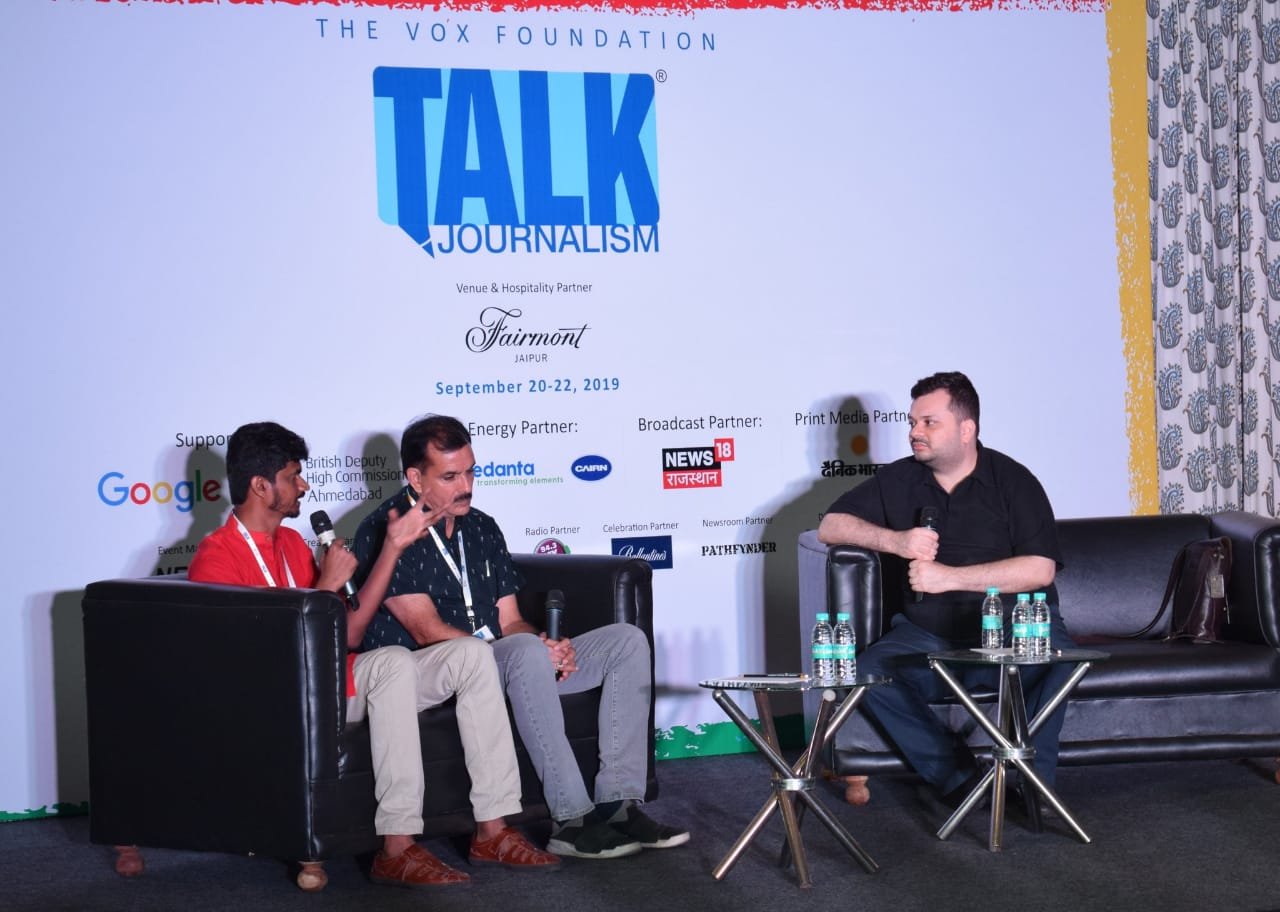Jaipur, 20 September 2019
The session couldn’t come to full bread conclusion about, if casteism exists in the newsroom , but also couldn’t deny with it. The audience was left with these controversial questions in their mind.
“‘ Muslim ke issues ko muslim he cover karte hai aur mahila ke issues ko mahila he cover karti hai, par dalit issue ke liye dalit nahi hai ” this is the status of newsroom today says Tejas Harad, Copy Editor of Economic and Political Weekly. He also conjectured how the problem is very wide-ranging, especially in India in comparison to the U.S where 60% of white people are dominating over the rest. However, there are just 5% – 10% of Brahmins in India who are overshadowing more than 60% of SC ST’S. This issue is always in the mainstream but it’s unfortunate we are yet to this bone of contention.
As the panel was made open to discuss, the moderator Shivam Vij, Editor of The Print began asking about the caste composition in the newsroom and how the backward classes are often isolated and are alien to many opportunities when it comes to career and professions.
Where he always deeply focused on the context of diversity in the newsroom.
Another panellist Shripal Shehrawat, the journalist who knows this profession and the crux of this issue inside-outside also added some dignified bird’s-eye view to this discourse by narrating an incident if his own where he was barbarously criticized for showing an interest in journalism. However, he also said how people eventually come around when he did not quit. He also adjoined the lack of awareness in OBC and other minorities when it comes to breeding opportunities may it be in education or in a civil society. Where he mentioned Asian College of Journalism’s special program for Dalits as well.
In the interrogative arena asking that casteism is seen everywhere so does it affects the profession of journalism in day to day life?
It was Shripal Shaktawat answering to this saying that it’s been 30 year’s and have been seeing scenario changing where he watches all categories of people working together but same back it was difficult getting people from a lower caste in this profession. The mindset of people for journalism then was to be just seen on camera , but now the things have changed and have to a different level. But casteism was then and is yet present in the newsroom.
When asked to Tejas Harad on his way of viewing the issues he told that casteism is everywhere.
In the USA there are 60% of white people and in India, brahmins are only 5 %, but domination is relatively equal. Hence the problem in India is much bigger than any other country.
So the journalists way if covering an issue differs with their upbringing as that prioritize their content. Tejas says that the one who was writing the issues are only writing and it had not yet democratically changed.
This problem is systematic and it starts from early days of schooling, college and workplace.
“30 saal pehle Mai Meri biradari ka teesra aadmi tha patrakarita me”, says Shripal Shaktawat on his journey of journalism. He with his real-time story compared today scenario with then.
Tejas says that the questions they face are not appropriate rather one must think what can be the solution taking that into consideration.
He feels there should be a caste audit in the newsroom to have a variety at a place.
Shripal countered and added that this isn’t possible but the things have changed today.
In the end the dignitaries we’re felicitated with a memento by Sohab and Rahul.
Text: Qadeer Ehaab & Swastika Sruti| Copy Edit: Niharika Raina | Photo: Qadeer Ehaab | Photo Desk: Sagar Samuel | Editorial Coordination: Rupali Soni & Niharika Raina


